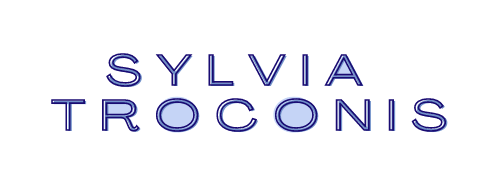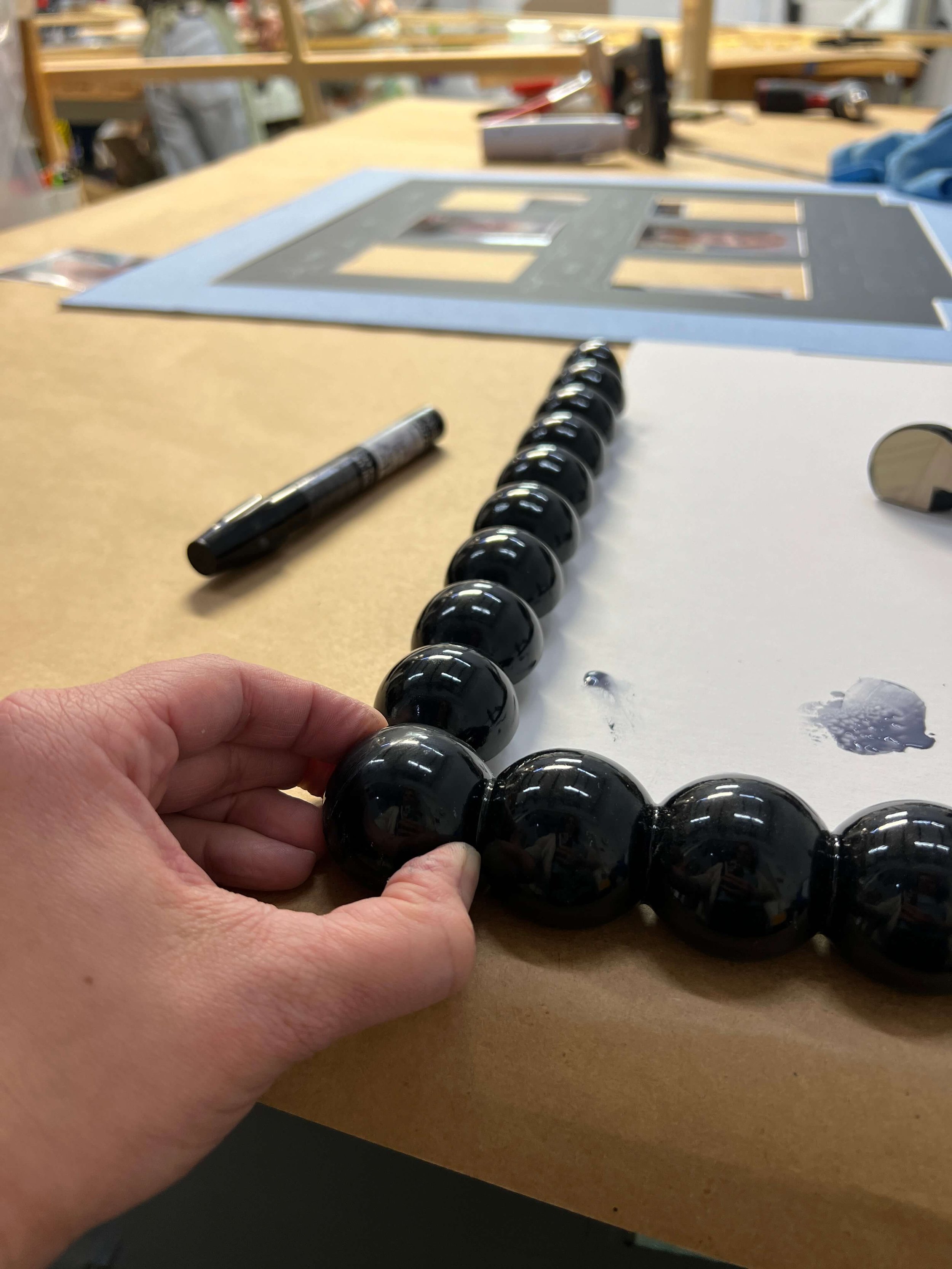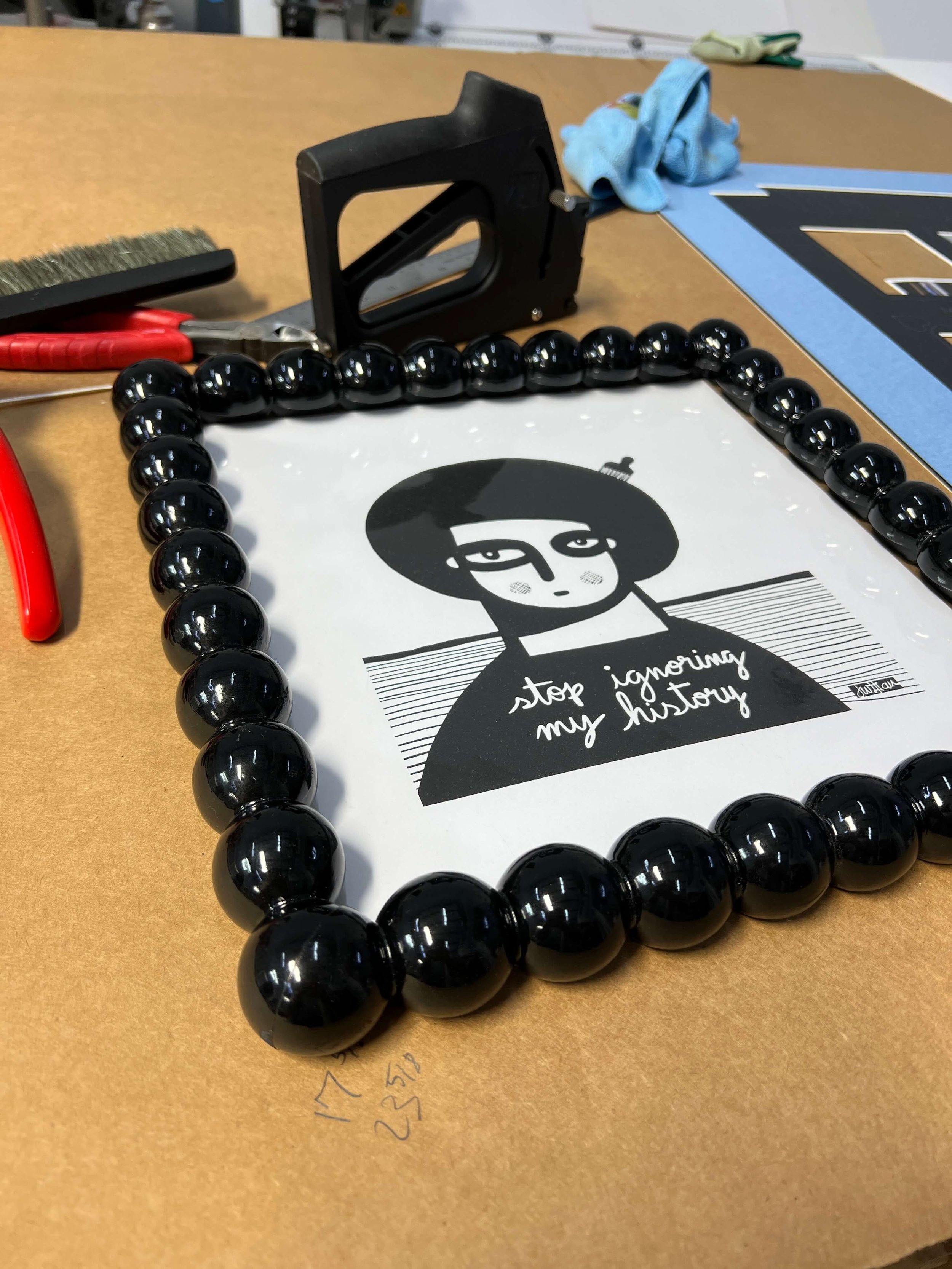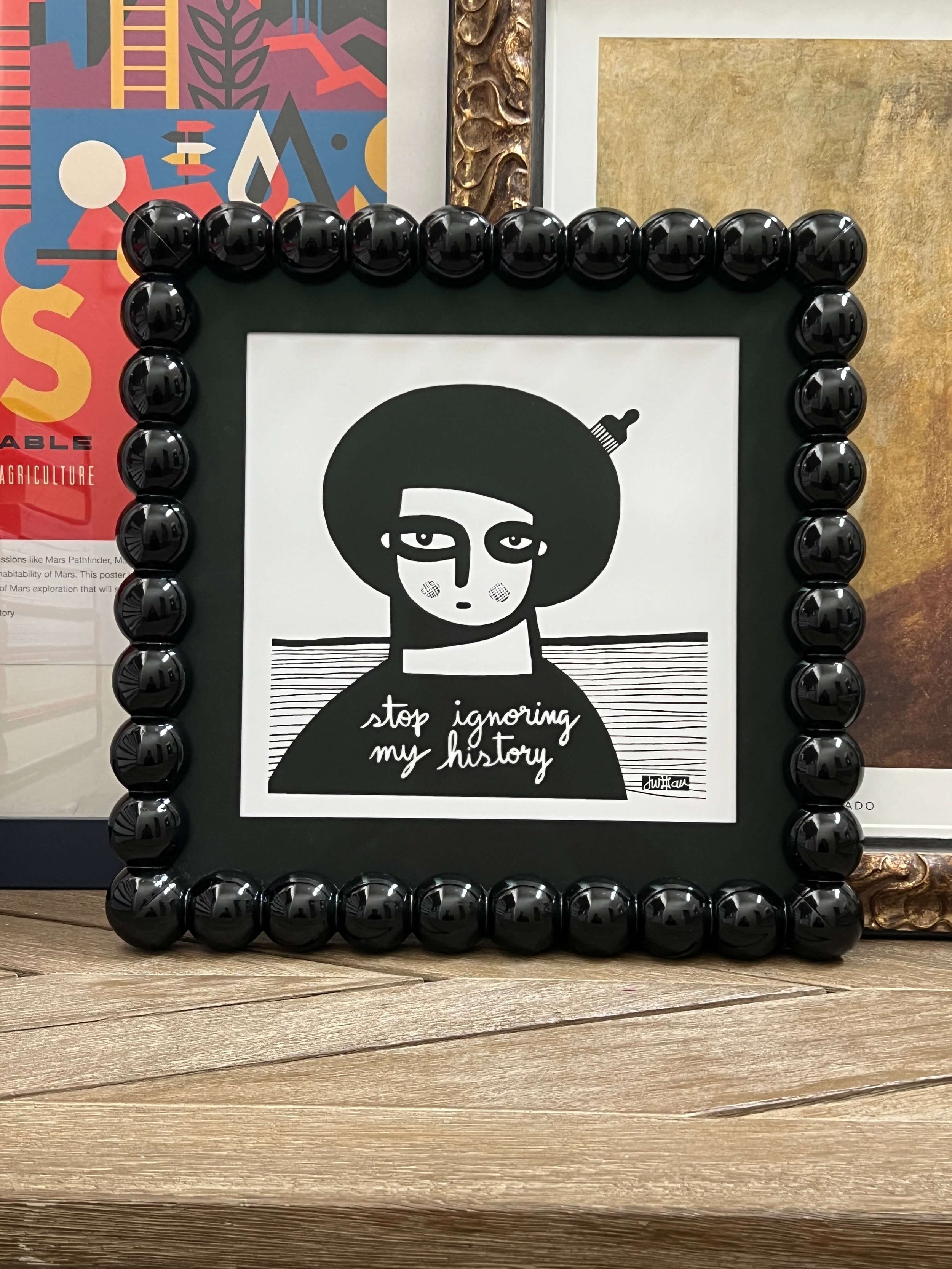Mastering the Craft: An In-Depth Look into the Art of Framing
Having devoted 2.5 years to the field of picture framing and obtaining certification last year from the PPFA (Professional Picture Framers Association), the realization dawned upon me that framing is a distinct craft with a depth of knowledge often underestimated. Preservation techniques, contingent upon the value, whether monetary or sentimental, underscore the intricacies involved. In this blog post, I will meticulously outline the process of framing a print by the esteemed artist and friend, Nick Ramos.
Selecting an Unconventional Moulding:
Initiating the framing process involves the critical task of selecting a moulding that aligns with and enhances the artwork. Opting for an unconventional moulding sourced from Gryphon Moulding, I sought to mirror the distinctive features of the character depicted in Nick's print. The design elements, including balls reminiscent of the character's afro, contribute to a cohesive visual presentation that encapsulates the essence of the artwork.
Ball Moulding from Gryphon Moulding.
Navigating the Challenges of Unconventional Moulding:
The utilization of unconventional moulding introduces distinctive challenges. In contrast to standard cut-and-glue framing techniques, precision takes precedence. The process necessitates cutting larger pieces and meticulously sanding them down to achieve the desired middle of the ball, ensuring a flawless and visually appealing corner finish.
Working with this particular moulding accentuates the importance of accuracy in dimension. Tailored to specific art dimensions, each step demands meticulous measurement and calculation to guarantee the frame perfectly encapsulates the artwork. Deviating from these dimensions poses the risk of compromising the final outcome, emphasizing the significance of precision.
Sanding the ends until is right in the middle.
V Nailing Technique:
After gluing the moulding together and to fortify the corners and uphold structural integrity, the frame is secured using the V nailing technique. This involves strategically shooting V-shaped staples from the back, establishing a secure bond that ensures the frame components remain tightly integrated. This additional safety measure contributes to enhanced strength and durability throughout the framing process.
Check the V nail in the moulding.
Preserving Artwork with Acid-Free Foam Core:
Prior to framing the print, a methodical approach is employed, involving the hinge of the artwork to an acid-free foam core board using P90 tape. Beyond aesthetic considerations, the acid-free nature of the foam core mitigates yellowing over time, that can then be transferred to the print.
This P90 tape goes around the foam core and then is attached to that foam core with another piece of tape creating a T hinge.
Creating a Precision Mat:
The subsequent step involves crafting a precision mat using the Valiani mat cutter. While the mat may serve decorative purposes, its primary function is to establish a gap between the artwork and the glass. This separation prevents the transfer of the print onto the glass over time, damaging the art in the long run.
Designing the mat.
Choosing Artglass AR70 for UV Protection:
The final touch involves the selection of suitable glass. Artglass AR70, is an anti-reflection glass with 70% UV protection. I chose this middle grade protection glass to safeguard the print. This strategic choice guards against the detrimental effects of UV light, preventing fading of the print over time and aligning with the commitment to preserving the integrity of the artwork.
Completing the Framing Process:
With all components meticulously arranged—the print, foam core, mat, and Artglass AR70—the art package is carefully fitted into the frame. The back is sealed, and finishing touches, such as hangers, wire, pom poms, and stickers, are added.
Framing emerges as an art form in itself, demanding precision, attention to detail, and a profound understanding of the artwork's essence.










